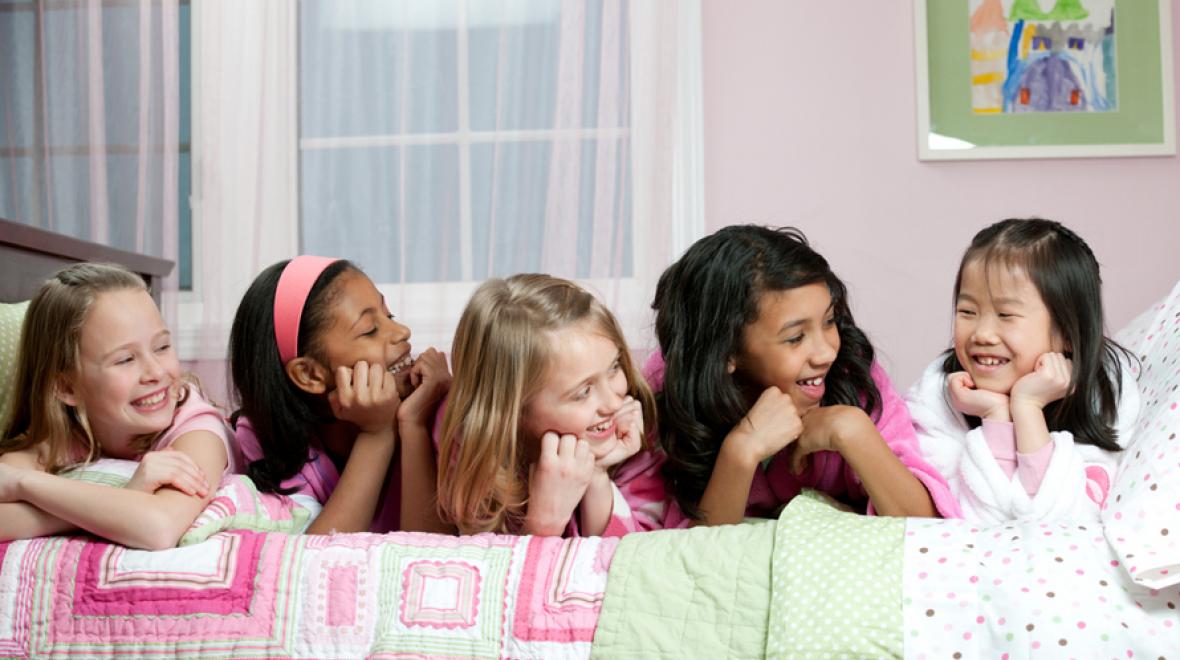
As any parent who has hosted a “sleepover” could argue, the word is an oxymoron. Really, not a lot of sleeping goes on! Sleepovers are really supersize, overnight play dates — not that there is anything wrong with that. My own fifth-grade sleepover memories include 1-pound bags of M&Ms and a Ouija board that knew way too much about tween-girl crushes.
But besides the fun factor, sleepovers can serve a real purpose: They can help children learn skills that are important to future independence, such as adaptability and resilience. They also bring with them a few real risks parents should consider when handing over the bunny slippers to another parent.
To help your kids feel comfortable catching (or missing!) their zzz’s somewhere else, think in terms of three important P’s: people, places and preparation.
People
Ed Padilla, a Kent teacher and the father of a fourth-grade boy and a second-grade girl, says his kids got ready for sleepovers by first doing “starter” sleepovers with their grandparents. For many kids, grandma and grandpa are the most comforting people to be with, besides a parent or caregiver. Now that his kids have graduated to sleepovers at friends’ homes, the first questions Padilla asks when that invitation comes are “Do you want to be with this person?” and “How well do you know them?”
In their book "Monsters Under the Bed and Other Childhood Fears," Stephen W. Garber, Marianne Daniels Garber and Robyn Spizman suggest another baby-step strategy: Host a sleepover at your house first. That way, your child can observe how his friends handle being away from home. “Seeing his friend handle a little anxiety will be reassuring to the child,” they write.
When it’s time for a sleep-away, consider this important safety rule a must: Never send your child to a home where you do not know the adults, older siblings or other residents of the home. Crime statistics show the vast majority of assaults are committed by a person the child knows.
That fact led Melanie, a Lake Forest Park mother, and her police-officer husband to put a moratorium on sleepovers until their daughter is 13. She is 10 years old now, and gets picked up from sleepover parties at 10 p.m., rather than spending the whole night. “I don’t want her to be the kid who doesn’t get to go to anything,” Melanie says, but on this one, she is firm, because she doesn’t believe the risk is worth it.
Place
Some of the most exciting and interesting sleepover opportunities for 6- to 10-year-olds are at places we would not normally think to throw down a pillow, such as aquariums and museums. Meaghan Sullivan, manager of youth and family programs for the Pacific Science Center in Seattle, organizes camp-ins and sleepover nights for thousands of young people each year.
In some cases, a child comes with a group, such as scouts or a church group. Other programs require that each child is accompanied by a parent or caregiver. Certain programs allow kids as young as those in first and second grades. Sullivan says if homesickness does set in, it is almost always with this younger group. “If one gets homesick, it can be contagious, and suddenly we will have 15 kids homesick.”
Sullivan says there is no question that homesickness is less of a problem if kids are comfortable with their surroundings. “We make sure that the children get several hours in the evening before bedtime to really roam around as they please with their small groups and check out where they will sleeping,” says Sullivan (which makes sense, especially if they will be sleeping under a replica of a giant dinosaur!). Also, whether at a remote location or a home that is new to the child, “Make sure they know the route to the restroom,” Sullivan suggests.
It may help anxious kids to understand how far their sleepover location is from home. “Explain that if he needs you, you can be there in less time than it takes to watch his favorite show, bathe or eat an ice cream cone,” say the Garbers and Spizman.
Preparation
Karen Joslin, M.A., author of "Positive Parenting from A to Z", suggests parents work in small steps with sleepover rookies. For instance, take the child to the friend’s house for the evening, bring her home for bed, and then take her back for breakfast to “show her the fun of completing the stay,” Joslin says.
Have your child write a story or draw pictures about sleeping away. If the images are negative, then you may be able to identify the sources of their fears. Joslin says that whatever you do, stay positive. “Do not ridicule, demean or compare your child to others with comments such as ‘Come on, don’t be a baby.’”
Similar to getting ready for a first-ever family camping trip, you could set up a tent in the living room to give your child practice at falling asleep somewhere new. Remember that much of what scares children at this age are the different sounds, shadows and smells of a new place. If they need to venture out of their own bedroom in small steps, try to find ways to let them.
Finally, while you’re preparing your kids for their time away, prepare yourself for a tired — and possibly grouchy! — kid the next day. “The worst thing you can do is plan activities for the next morning,” says Sullivan. “Make sure to give them downtime.” Indeed, it is often the night after a sleepover that the best sleeping takes place!
This story originally published in July 2009 and was updated in June 2018. Ages were left as per the 2009 publication to reflect the advice given at that time.











